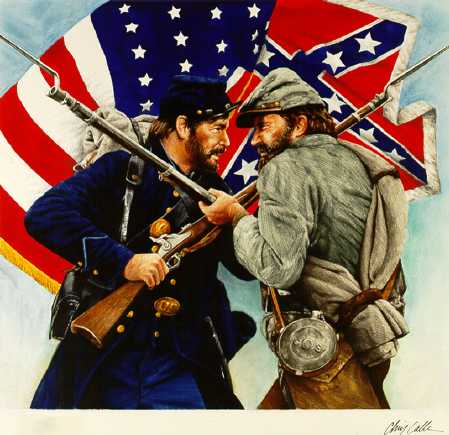Coyote wrote:That was part of the original intent. The early USA didn't even have a navy, most of our men-o-war ships were armed merchantmen and privateers, for example, with privately owned cannon. Up through the War of 1812, IIRC.
Whether you think this is still valid or possible can be another matter, of course. Although it was only a matter of time before the old "armed civilians vs. modern military" argument came up. Bear in mind as we enter this phase of the discussion that the motivations for why an armed uprising against the government would be occurring will play heavily into the arguments about effectiveness.
Thing is, that militia wasn't supposed to exist
to overthrow the government. It was supposed to exist to be used
by the government; the militias were one of the main arms the state governments used to crack down on dissenters within their own states (see Shays' Rebellion).
There is no evidence I know of that the supporters of the Bill of Rights were such committed libertarians that they expected armed revolts to be a
good thing, or even much that they expected the possibility of armed revolts working in their favor.
Moreover, the language of the Second Amendment calls your theory into question, because it talks about the right to "bear arms," not to "possess arms," "own arms," "purchase arms," or the like. "Bear arms" classically has a fairly specific meaning, indicating service in an organized armed force. Thus, my buddy the national guard artilleryman "bears arms," at least occasionally; I do not, even if I were to buy an AR-15 and play at being a soldier.
On top of that, historically no effective militia relied on private gun ownership. The closest to an effective example would be the Massachusetts Minutemen, who were a
specialized rapid reaction force within a larger militia. And when they went up against British regulars they got their asses handed to them; it was the bulk of the slower-mobilizing militia that gave the British such a hard time at Concord and on the retreat back to Boston.
Serafine666 wrote:All modern small arms (and most larger arms) are breech-loading; the term simply means that each round is loaded at the breech of the gun instead of the muzzle. And generally when you say "semi-automatic" where rifles are concerned, you're talking about a system where the action utilizes a limited form of the automatic mechanism to load one round every time the trigger is pulled whereas an "automatic" rifle loads rounds as long as the trigger is held down.
Yes, I know. I refer to single-shot weapons as "breech-loaders" because while they are breech-loading (like all other modern guns), that is the only common* firearms term which applies to them: they don't have an "action" as I understand it, nor can they be described as any variation on the theme of "automatic" (which would require an action).
*As in not-specialized, not as in "common within the firearms community."
Simon_Jester wrote:Bolt action refers to a rifle that has a hand-operated bolt that is pulled up and back to eject a round and then pushed forward and down to load the next. You also hear things like lever-action (a lever below the barrel is swung down to eject the round then swung back up to load the next), hinge or break-away action (the entire barrel swings downwards to eject the round and another one is hand-inserted into the exposed breech and then the barrel is swung back up to lock the round into place), and pump-action (the pump is pushed forward to open the breech and eject the round then pulled back to load the next round and close the chamber; this is most commonly used for shotguns). And what you refer to as "self-loading" I would call "semi-automatic" to distinguish it from the type of action my Mosin-Nagant uses.
I used the term "self-loading" purely so that I had a word for guns which load themselves that did not contain the word "automatic," because that was the term I was trying to define.


